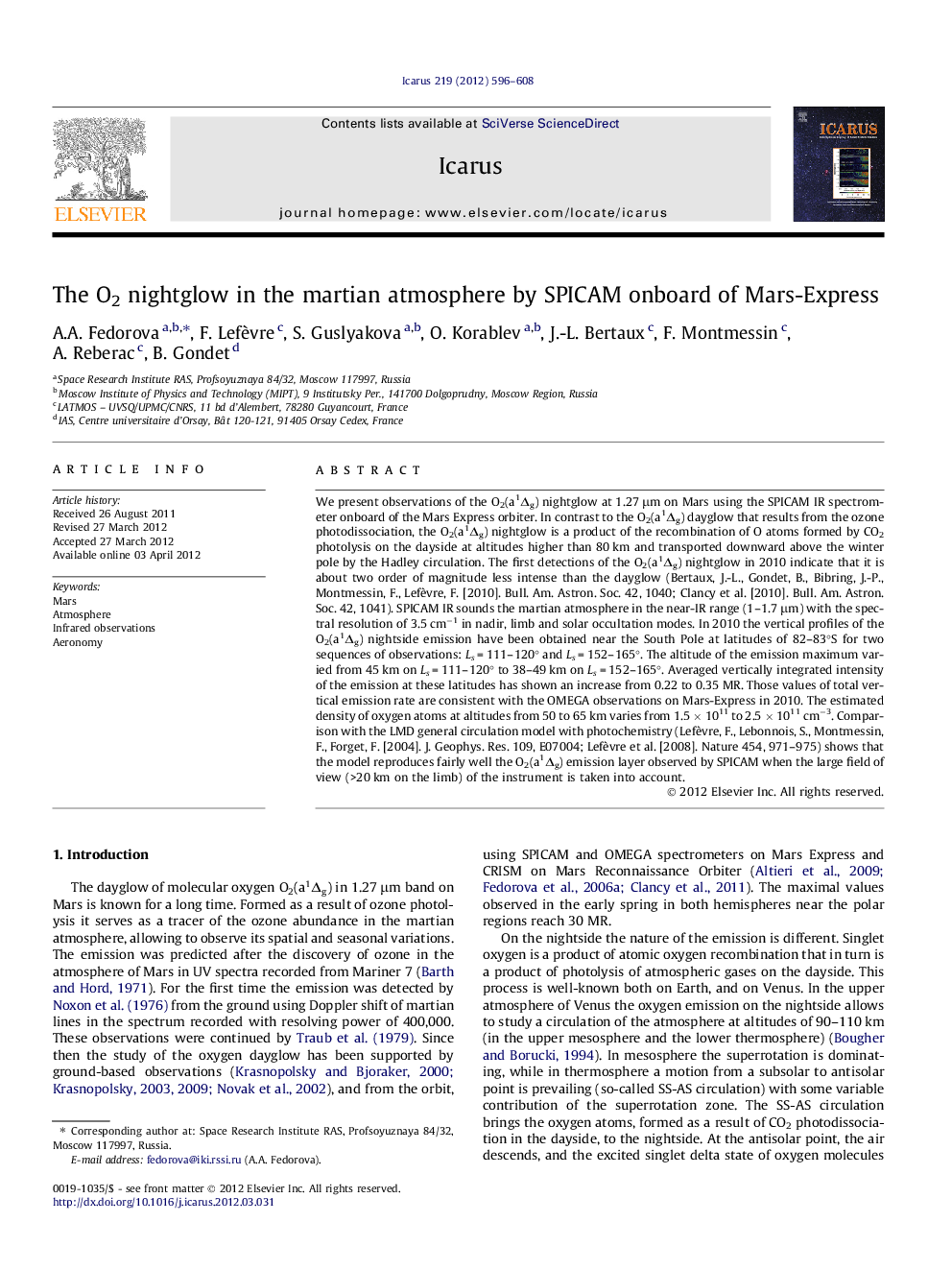| Article ID | Journal | Published Year | Pages | File Type |
|---|---|---|---|---|
| 1773591 | Icarus | 2012 | 13 Pages |
We present observations of the O2(a1Δg) nightglow at 1.27 μm on Mars using the SPICAM IR spectrometer onboard of the Mars Express orbiter. In contrast to the O2(a1Δg) dayglow that results from the ozone photodissociation, the O2(a1Δg) nightglow is a product of the recombination of O atoms formed by CO2 photolysis on the dayside at altitudes higher than 80 km and transported downward above the winter pole by the Hadley circulation. The first detections of the O2(a1Δg) nightglow in 2010 indicate that it is about two order of magnitude less intense than the dayglow (Bertaux, J.-L., Gondet, B., Bibring, J.-P., Montmessin, F., Lefèvre, F. [2010]. Bull. Am. Astron. Soc. 42, 1040; Clancy et al. [2010]. Bull. Am. Astron. Soc. 42, 1041). SPICAM IR sounds the martian atmosphere in the near-IR range (1–1.7 μm) with the spectral resolution of 3.5 cm−1 in nadir, limb and solar occultation modes. In 2010 the vertical profiles of the O2(a1Δg) nightside emission have been obtained near the South Pole at latitudes of 82–83°S for two sequences of observations: Ls = 111–120° and Ls = 152–165°. The altitude of the emission maximum varied from 45 km on Ls = 111–120° to 38–49 km on Ls = 152–165°. Averaged vertically integrated intensity of the emission at these latitudes has shown an increase from 0.22 to 0.35 MR. Those values of total vertical emission rate are consistent with the OMEGA observations on Mars-Express in 2010. The estimated density of oxygen atoms at altitudes from 50 to 65 km varies from 1.5 × 1011 to 2.5 × 1011 cm−3. Comparison with the LMD general circulation model with photochemistry (Lefèvre, F., Lebonnois, S., Montmessin, F., Forget, F. [2004]. J. Geophys. Res. 109, E07004; Lefèvre et al. [2008]. Nature 454, 971–975) shows that the model reproduces fairly well the O2(a1Δg) emission layer observed by SPICAM when the large field of view (>20 km on the limb) of the instrument is taken into account.
► The vertical profiles of the O2 nightside emission near the South Pole at Ls = 111–165° are presented. ► Integrated intensity of the emission has shown an increase from 0.22 to 0.35 MR. ► The integrated values consist with previous observations by OMEGA/MEX. ► The estimated density of oxygen atoms at altitudes from 50 to 65 km varies from 1.5 × 1011 to 2.5 × 1011 cm−3.
